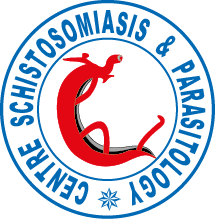Mating behaviour in mixed infections of Schistosoma haematobium and S. mattheei
Abstract
In mixed infections ofSchistosoma haematobium andS. mattheei, homospecific and heterospecific pairs are formed, with a preponderance of homospecific pairs indicating the existence of a mate preference system.S. haematobium apparently exhibits a greater specific mate recognition system than doesS. mattheei. In sequential infections when mice are exposed toS. mattheei 4 weeks after infection withS. haematobium, S. haematobium males are better at pairing withS. mattheei females than areS. mattheei males. Hence, genetic exchanges betweenS. haematobium andS. mattheei giving rise to viable hybrids poses the problem of the genetic identity of these species of schistosomes. The most important reproductive isolating mechanisms are definitive host specificity,S. haematobium being primarily a parasite of man, whereasS. mattheei is a parasite of domestic stock and wild ungulates, and the preference for homo-specific pairings in simultaneous infections. In contrast, whenS. haematobium is the older infection,S. haematobium males are better thanS. mattheei males at pairing with females of either species. Hybridisation is the likely outcome of such interactions. The lack of viability ofS. mattheei male XS. haematobium female indicates genetic differences between the two species. Occurrences of natural hybridisation betweenS. haematobium andS. mattheei may lead to a change in the response of the parasite to chemotherapeutic treatment.
